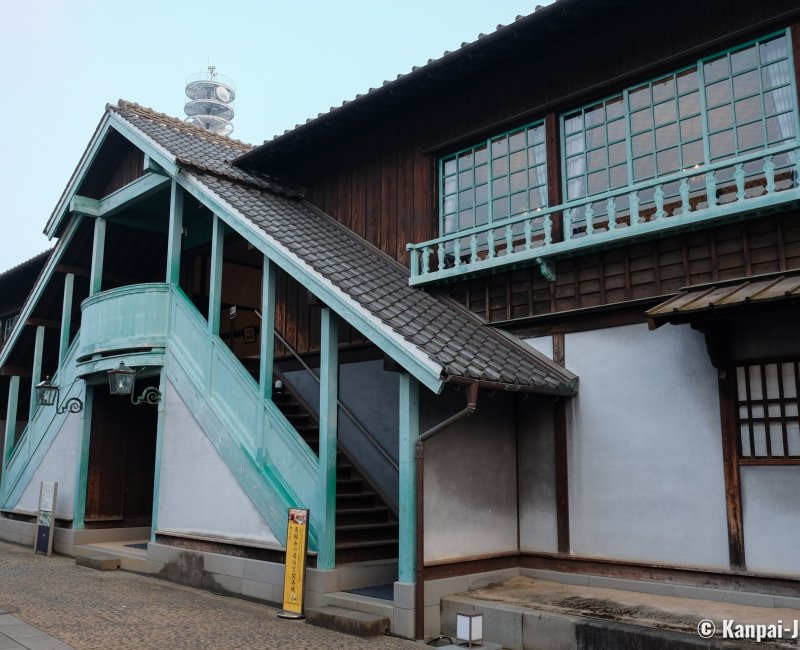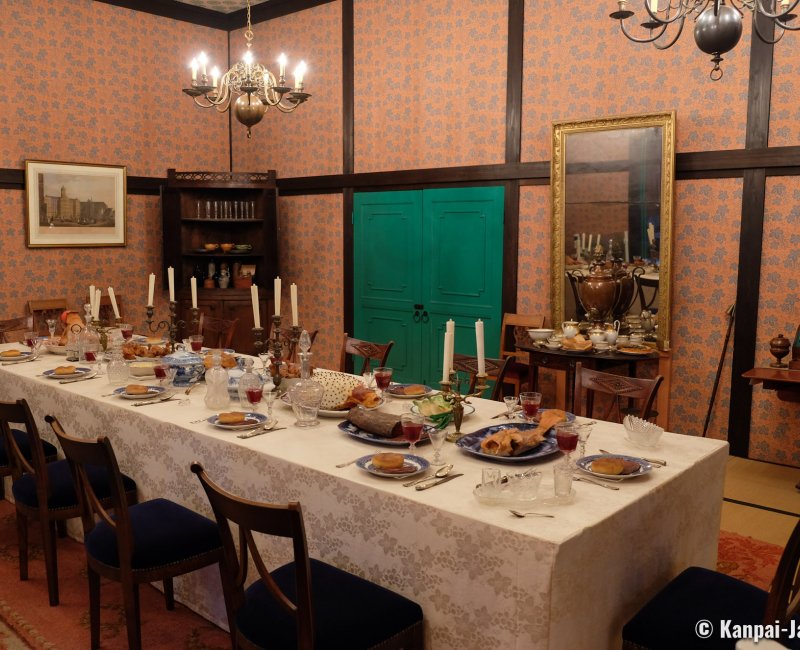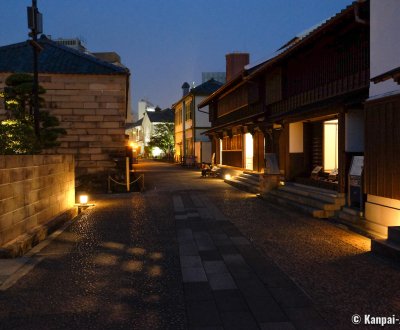Dejima
The Old Foreigners Settlement Island in Nagasaki
Dejima is a former man-made island located in the port of Nagasaki on Kyushu Island. Restricted to foreigners who arrived in Japan by ship, it hosted a Portuguese community in the 17th century, then a Dutch trade counter. The site is now an open-air museum dedicated to the Edo period and the distant relationship between Japan and the West.
In 1603, Tokugawa Ieyasu (1543 - 1616) started a dynasty of shoguns who would rule strictly over Japan during the Edo period (1603 – 1868). At the time, the archipelago was under a strict isolationist policy, called sakoku, that was first implemented in 1633 by Iemistu, who succeeded Ieyasu. Japan’s borders were under close supervision and relationships with other countries (of Asia and the West alike) were kept minimal.
On the western side of Kyushu Island, Nagasaki was selected as one of the few Japanese ports opened to foreigners. For this purpose, Dejima, a man-made island shaped like a fan was built in 1636 close to the port in the bay. Between curiosity and wariness, this window on the West hosted foreign settlements whose inhabitants were not allowed to set foot on the Japanese land.
Portuguese traders and missionaries, who had already been sailing to Nagasaki since the 2nd half of the 16th century, settled the 1rst international community in Dejima. However, the Japanese authorities had them under close scrutiny due to their ban of Christianity around the same period. Members of the Portuguese colony ended up being expelled in 1639.
2 years later, in 1641, the Dutch East India Company was granted the artificial island as the only place where foreign nationals are allowed to live and work. This only Dutch counter in Japan continued trading until the 19th century and the forced opening to all Western traders by Commodore Perry in 1853.

An open-air architecture and history museum
Dejima lost its island status in 1904 when most of the surrounding waterways were filled to reclaim land on the sea. Later, its original buildings were blasted by the explosion of the atomic bomb above Nagasaki on August 9, 1945, but thanks to the recognition of their national historical value in 1922, they underwent large scale renovations as soon as 1951. Now the long term objective is to give Dejima back its former look of a small island surrounded by water.
Today’s visitors will find a district made of about 20 buildings carefully reconstructed or renovated, with the same aspect as their original time period construction. As a matter of fact, various architectural styles can be identified in its streets:
- Traditional Japanese style buildings made of wood;
- Stone warehouses from the end of the Edo period;
- Original Western style pavilions dating to the Meiji era (1868 – 1912), including a protestant church and the Former Nagasaki International Club.
A kimono 👘 rental shop is available to try on and snap a few pictures in the traditional Japanese robe. There is also a scale model of Dejima, to better understand the layout of the residences at a bird’s eye view.

Most of the buildings are open to the public, and sightseers walk into rooms staged in the fashion of their periods, with ancient furniture and beautiful wall papers with modern patterns. Many every day life objects are exhibited, with detailed explanations in English to appreciate the life of the first expatriates in Japan.
Dejima is a well-made open-air museum and a must-see in the city for amateurs of Japan’s history, and also for those interested in knowing more about Nagasaki’s hidden Christians (kakure kirishitan). A souvenir shop and a tea room, open for lunch and for a snack in the afternoon, can cater to visitors staying the whole day.

